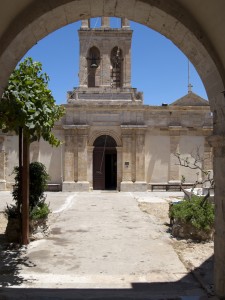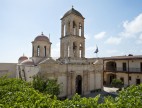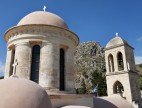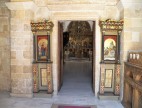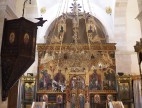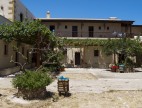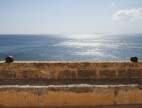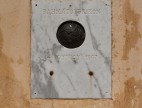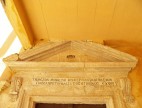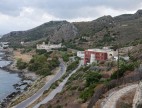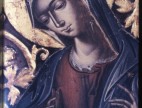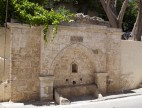Gonia Monastery
It is situated near the village of Kolymbari and it is one of the best preserved monasteries on Crete; it looks like a fort and has a three apse Catholicon church and two chapels. The initial donor (ktetor) was Brother Vlassios, a monk from Cyprus, who, according to tradition, started building the Monastery on a site to which he had been led by Mother Mary. This is why the monastery that was built between 1618 and1637 is dedicated to Mother Mary Hodegetria (she who shows the way).
The monastery has been an attraction for numerous monks and hermits and flourished in the last decades of Venetian rule. It was conquered by the Ottomans in 1645, but had the good fortune of being under the administration of significant men of the church (like Isaias Diakopoulos), who not only preserved its fortune, but introduced the teaching of Letters and Arts at its premises. Before the Ottoman looting, the monks had arranged to send 40 valuable icons away from the monastery to other Greek territories; these were returned after the Liberation Revolution. Unfortunately, there was futher looting in1866. Still, even today, in the museum of the monastery one can admire the wealth of its icons and manuscripts. Pride of place is given to the icons of the Crucifixion, of St. Nicholas (1637), the multi-faced icon of the Story of Joshep of the Nile (1642), two more icons of St. Nicolas (15th and 17th century), of the Transfiguration (15th century), of Mother Mary of Mercy (Eleousa) (15th century), of Christ the Prelate (15th century).
The museum also has two old Monastic Codes with rich content about its history, as well as other manuscripts and sacred utensils.

